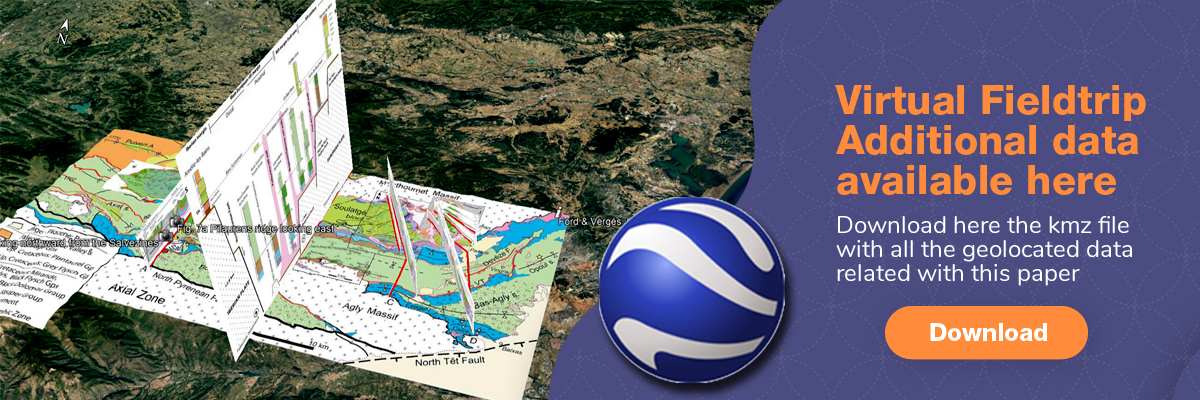Ford, M., & Vergés, J. (2020). Evolution of a salt-rich transtensional rifted margin, eastern North Pyrenees, France. Journal of the Geological Society, jgs2019-157. https://doi.org/10.1144/jgs2019-157
Abstract
In this field study we reinterpret the narrow eastern North Pyrenean Zone, France, as an inverted salt-rich transtensional rift system based on identification of halokinetic depositional sequences across rift platform to distal rift margin domains with a cumulative throw of >2.8 km on steep Cretaceous faults. The rift platform records extension on detached rotational faults above Triassic evaporites from Jurassic to Aptian with uplift and erosion during the Albian. Transtensional Aptian–Albian minibasins align along the salt-rich rift margin fault zone. In the Aptian–Albian main rift large en echelon synclinal minibasins developed between salt walls, although Jurassic diapiric evolution is likely. Upper Cretaceous units locally record continuing diapirism. The Boucheville and Bas Agly depocentres, altered by synrift HT metamorphism, form the distal rift domain terminating south against the North Pyrenean Fault. The narrowness of the Pyrenean rift, shape of minibasins, en echelon oblique synclinal depocentres and folds coupled with a discontinuous distribution and intensity of HT metamorphism support a transtensional regime along the Iberia–Europe plate margin during late Early and early Late Cretaceous. In this model, the distal European margin comprises deep faults limiting laterally discontinuous crustal domains and ‘hot’ pull-apart basins with mantle rocks directly beneath sedimentary cover.
Access to the article via Digital CSIC institutional repostory
Virtual fieldtrip: additional resources and data
Download here the kmz file with additional data of this research

